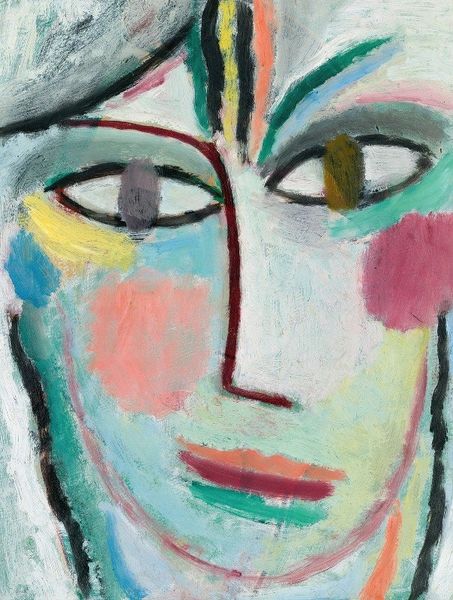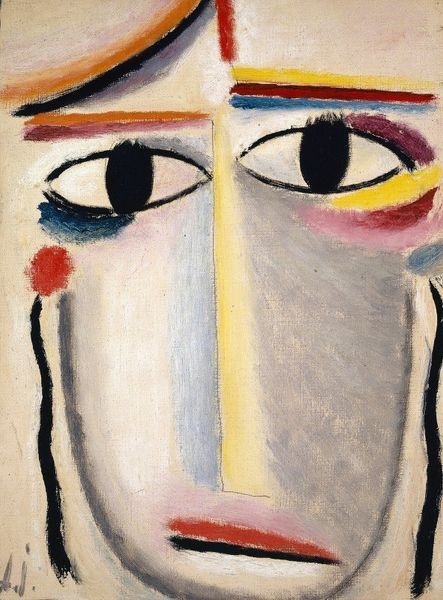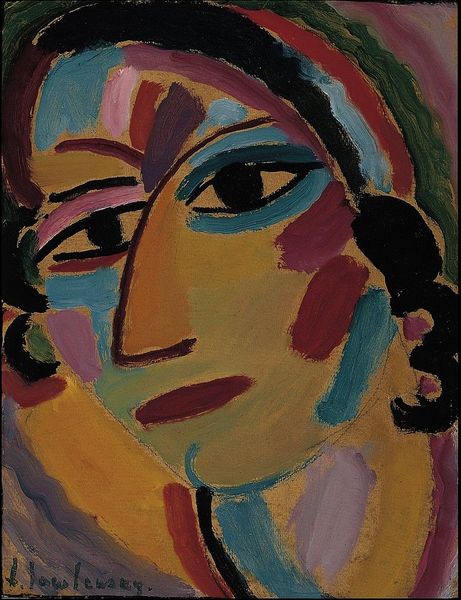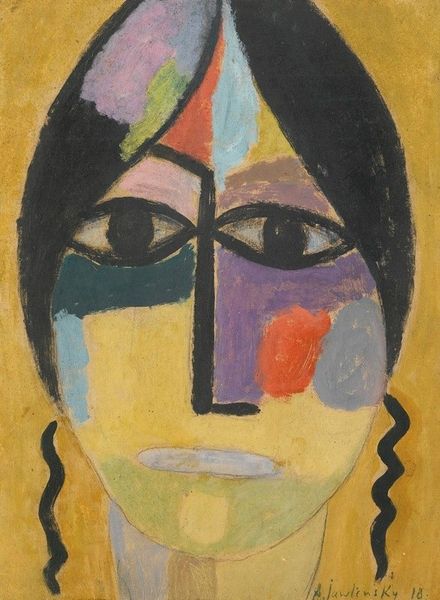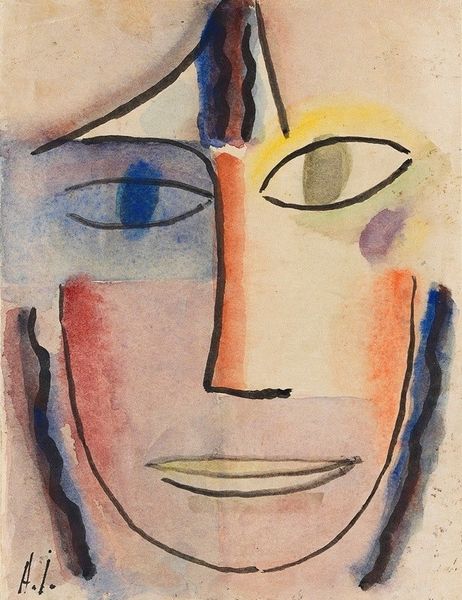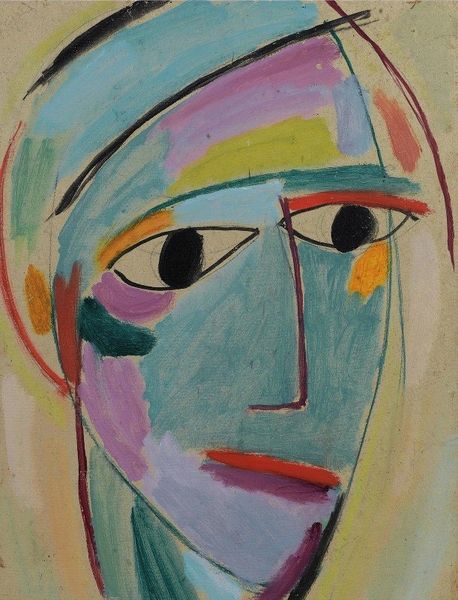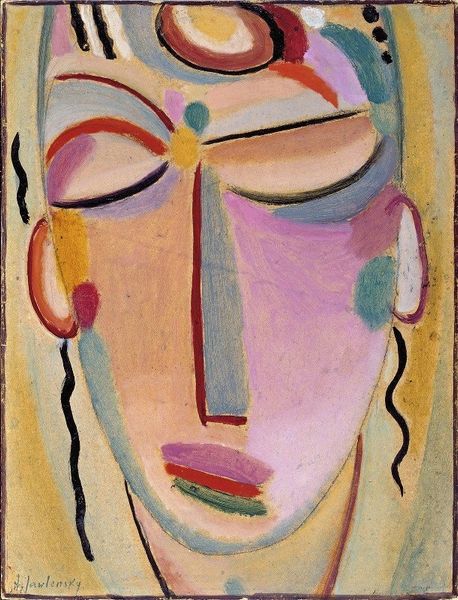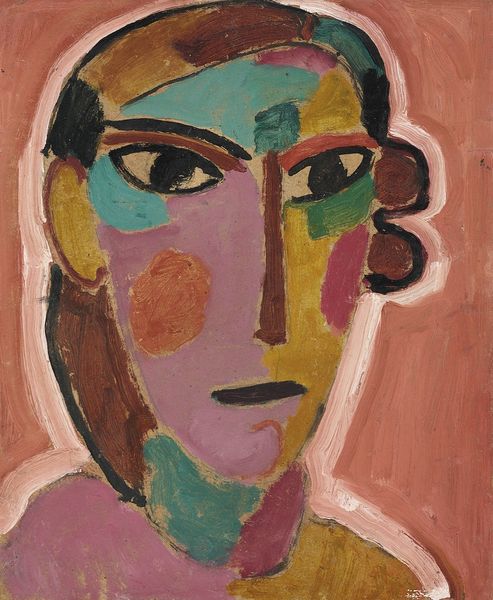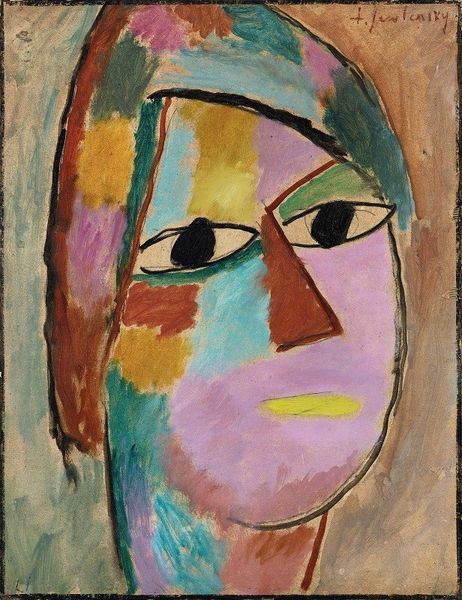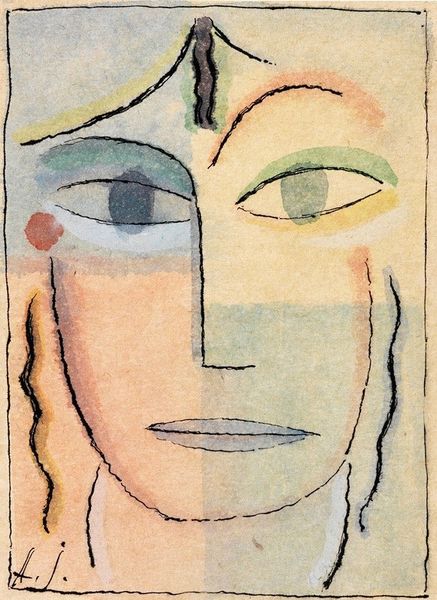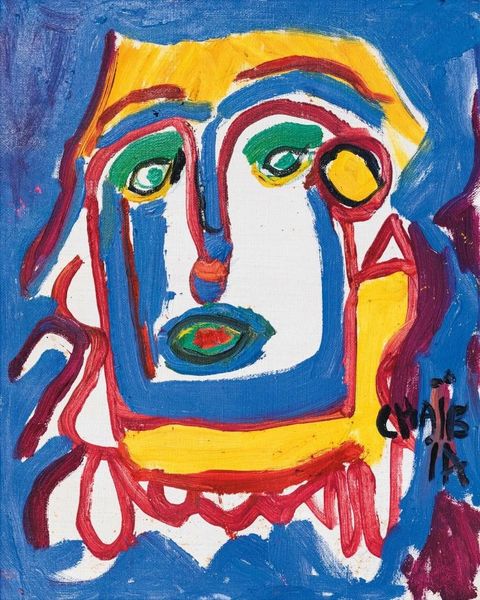
painting, oil-paint
#
portrait
#
self-portrait
#
painting
#
oil-paint
#
german-expressionism
#
figuration
#
expressionism
#
abstraction
Copyright: Public domain
Editor: Here we have Alexej von Jawlensky’s 1919 oil painting, "Astonishment." It's quite striking, a face composed of simple shapes and vivid colors. What do you see in this piece, beyond the initial impression? Curator: This piece, created in the wake of World War I, really speaks to the destabilization of identity in that era. Jawlensky's reduction of the face to near-geometric forms isn’t just about abstraction. Think about what the war did to bodies, to psyches, to entire nations. This "astonishment" isn't just a feeling; it's a reflection of a world unmoored. Where do you see evidence of that societal upheaval in the work itself? Editor: Well, the eyes are definitely the focal point; they're large, almost exaggerated, and seem to be staring intensely. And the colors are so unusual. They’re not naturalistic at all. Curator: Exactly. Consider the tradition of portraiture—historically, it's been used to solidify power, status, idealized beauty. Jawlensky is deliberately undermining that tradition. The gaze isn't inviting; it’s confrontational, challenging the viewer. The non-naturalistic colors further destabilize the image, pushing against conventional representations and toward a more subjective, emotional reality. The bright, almost childlike application of colour presents an interesting duality with the mature themes of the Expressionist movement. What social anxieties do you think may be surfacing here? Editor: I guess it's a rejection of established norms, a questioning of everything that was considered stable before the war. The colours especially contribute to that. Curator: Precisely! "Astonishment" embodies that sense of disorientation, inviting us to question the narratives we inherit. It asks us to engage with the messy realities of history, identity, and representation. Editor: I never really considered how much historical context could be packed into a single portrait, especially an Expressionist work like this. It really makes you think! Curator: Absolutely. And by understanding these contexts, we can begin to truly appreciate the radical potential of art.
Comments
No comments
Be the first to comment and join the conversation on the ultimate creative platform.
